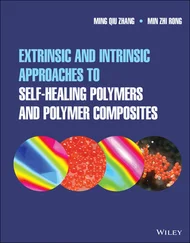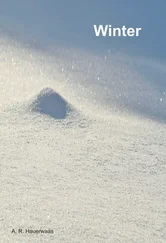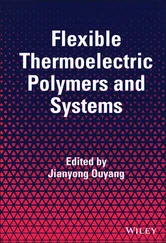1 Cover
2 Title Page Supramolecular Polymers and Assemblies From Synthesis to Properties and Applications Ulrich S. Schubert George R. Newkome Andreas Winter
3 Copyright Authors Prof. Ulrich S. Schubert Friedrich Schiller University Jena Laboratory for Organic and Macromolecular Chemistry (IOMC) Humboldtstraße 10 07743 Jena Germany Prof. George R. Newkome Florida Atlantic University Center for Molecular Biology and Biotechnology Jupiter Campus, 5353 Parkside Drive, RF17/207 Jupiter, FL 33458 United States Dr. Andreas Winter Friedrich Schiller University Jena Laboratory for Organic and Macromolecular Chemistry (IOMC) Humboldtstraße 10 07743 Jena Germany Cover Cover Image: © Sebestyen Balint/Shutterstock All books published by Wiley‐VCH are carefully produced. Nevertheless, authors, editors, and publisher do not warrant the information contained in these books, including this book, to be free of errors. Readers are advised to keep in mind that statements, data, illustrations, procedural details or other items may inadvertently be inaccurate. Library of Congress Card No.: applied for British Library Cataloguing‐in‐Publication Data A catalogue record for this book is available from the British Library. Bibliographic information published by the Deutsche Nationalbibliothek The Deutsche Nationalbibliothek lists this publication in the Deutsche Nationalbibliografie; detailed bibliographic data are available on the Internet at < http://dnb.d-nb.de >. © 2021 WILEY‐VCH GmbH, Boschstr. 12, 69469 Weinheim, Germany. All rights reserved (including those of translation into other languages). No part of this book may be reproduced in any form – by photoprinting, microfilm, or any other means – nor transmitted or translated into a machine language without written permission from the publishers. Registered names, trademarks, etc. used in this book, even when not specifically marked as such, are not to be considered unprotected by law. Print ISBN: 978‐3‐527‐33356‐1 ePDF ISBN: 978‐3‐527‐83241‐5 ePub ISBN: 978‐3‐527‐83240‐8 oBook ISBN: 978‐3‐527‐68532‐5 Printing and Binding Printed on acid‐free paper 10 9 8 7 6 5 4 3 2 1
4 Preface
5 Abbreviations
6 About the Authors
7 1 Supramolecular Polymers: General Considerations* 1.1 Introduction 1.2 Classification Schemes 1.3 Supramolecular Polymerization Mechanisms 1.4 Beyond Classical Supramolecular Polymerization 1.5 Concluding Remarks References
8 2 Supramolecular Assemblies Based on Ionic Interactions 2.1 General Aspects 2.2 Basic Binding Modes and Discrete Model Assemblies 2.3 Supramolecular Polymers, Based on Ionic Interactions 2.4 Concluding Remarks References
9 3 Supramolecular Polymers, Based on Hydrogen‐Bonding Interactions* 3.1 General Aspects 3.2 From H‐Bonding Interactions to Supramolecular Polymers 3.3 Conclusion Remarks References
10 4 Supramolecular Polymers, Based on Metal‐to‐Ligand Interactions* 4.1 General Aspects 4.2 Synthesis and Design Principles 4.3 Linear Metallo‐supramolecular Polymers 4.4 Concluding Remarks References
11 5 Supramolecular Polymers, Based on π‐Electronic Interactions 5.1 General Aspects 5.2 Columnar Supramolecular Polymers, Based on π–π Stacking Interactions 5.3 From π–π Stacking to Advanced Donor–Acceptor‐Type Charge–Transfer Interactions 5.4 From Charge–Transfer to π‐Electronic Ion‐Pairing Interactions 5.5 Linear Supramolecular Polymers, Based on π‐Electronic Interactions 5.6 Conclusion and Outlook References
12 6 Supramolecular Polymers, Based on Crown Ether Recognition 6.1 General Aspects 6.2 From Crown Ether Molecular Recognition Toward Supramolecular Polymers 6.3 Mechanical Interlocking: From Pseudorotaxanes to Rotaxanes 6.4 Poly(pseudo)rotaxanes, Derived from Preformed Polymers 6.5 Supramolecular Amphiphiles 6.6 Concluding Remarks References
13 7 Supramolecular Polymers, Based on Cucurbiturils 7.1 General Aspects 7.2 Interactions of CB[n]s with Small Organic Guest Molecules 7.3 Supramolecular Polymers Incorporating CB[ n ] Units 7.4 Concluding Remarks References
14 8 Supramolecular Polymers, Based on the Host–Guest Chemistry of Calixarenes 8.1 General Aspects 8.2 Calixarene‐Based Supramolecular Polycaps 8.3 Supramolecular Polymers Featuring Vacant Calixarene Scaffolds 8.4 Supramolecular Polymers, Formed by Host–Guest Interactions 8.5 Beyond Classical Calix[ n ]arenes: Calix[4]pyrroles 8.6 Miscellaneous Supramacromolecular Assemblies, Based on Calixarenes 8.7 Concluding Remarks References
15 9 Cyclodextrins in the Field of Supramolecular Polymers 9.1 General Aspects 9.2 Cyclodextrins and Supramolecular Polymers 9.3 End‐Capping: From Polypseudorotaxanes to Polyrotaxanes 9.4 Polymerization of Pre‐assembled Pseudorotaxanes 9.5 Supramolecular Polymerization, Based on CD Recognition 9.6 Amphiphilic Supramolecular Diblock Copolymers 9.7 Concluding Remarks References
16 10 Supramolecular Polymers, Based on the Host–Guest Chemistry of Pillarenes 10.1 General Aspects 10.2 Host–Guest Complexation Between Pillarenes and Linear Polymers 10.3 Supramolecular Polymers, Derived from Pillarene‐based Host–Guest Interactions 10.4 Hyperbranched and Cross‐linked Assemblies 10.5 Supramolecular Assemblies, Based on Amphiphilic Pillar[5]arenes 10.6 Concluding Remarks References
17 11 Supramolecular Polymers, Formed by Orthogonal Non‐covalent Interactions* 11.1 Introduction 11.2 Orthogonal Combinations of Supramolecular Interactions Involving Metal‐to‐Ligand Coordination 11.3 Orthogonal Combinations of Supramolecular Interactions Involving H-Bonding 11.4 Miscellaneous Orthogonal Combinations of Supramolecular Interactions 11.5 Biomimetic Orthogonal Self‐Assembly: Protein Recognition 11.6 Concluding Remarks References
18 12 Characterization of Supramolecular Polymers 12.1 Introduction 12.2 Estimation of the Molar Mass from the Theories of Supramolecular Polymer Science 12.3 Size‐Exclusion Chromatography 12.4 Viscometry 12.5 Light Scattering 12.6 Vapor Pressure Osmometry 12.7 Analytical Ultracentrifugation 12.8 NMR Spectroscopy 12.9 Mass Spectrometry 12.10 Microscopy Imaging 12.11 Small/Wide‐Angle X‐Ray Scattering 12.12 X‐Ray Crystallography 12.13 Small‐Angle Neutron Scattering 12.14 Asymmetric Flow Field‐Flow Fractionation 12.15 Taylor Dispersion Analysis 12.16 They Are Very Complex Structures but Totally Timely … References
19 Index
20 End User License Agreement
1 Chapter 1 Table 1.1 The strength and directionality of non‐covalent interactions. Source: Friese and Kurth [38]. © 2009 Elsevier.
2 Chapter 4Table 4.1 Overview over the metallo‐supramolecular block copolymers, based on terpyridine bis‐complexes.
3 Chapter 12Table 12.1 Stability constants and binding enthalpies of various [M(tpy) 2] 2+complexes. Source: Holyer et al. [37], Dobrawa et al. [38].
1 Chapter 1 Figure 1.1 Schematic representation of a polymer based on non‐covalent interactions. Figure 1.2 Schematic representation of the different types of supramolecular polymerization. Source: Winter et al. [39]. © 2012 Elsevier B.V. Figure 1.3 Representation of the theoretical DP as a function of the association constant ( K ain M −1) for a typical supramolecular polymerization according to an isodesmic model at two different concentrations. Source: Brunsveld et al. [27]. © 2001 American Chemical Society. Figure 1.4 Schematic representation of the three main mechanisms known for the supramolecular polymerization processes: (a) isodesmic, (b) ring‐chain mediated, and (c) cooperative supramolecular polymerization. Source: Winter et al. [39]. © 2012 Elsevier B.V. Figure 1.5 Schematic representation of the IDP in which the intermolecular equilibrium constant (
Читать дальше












